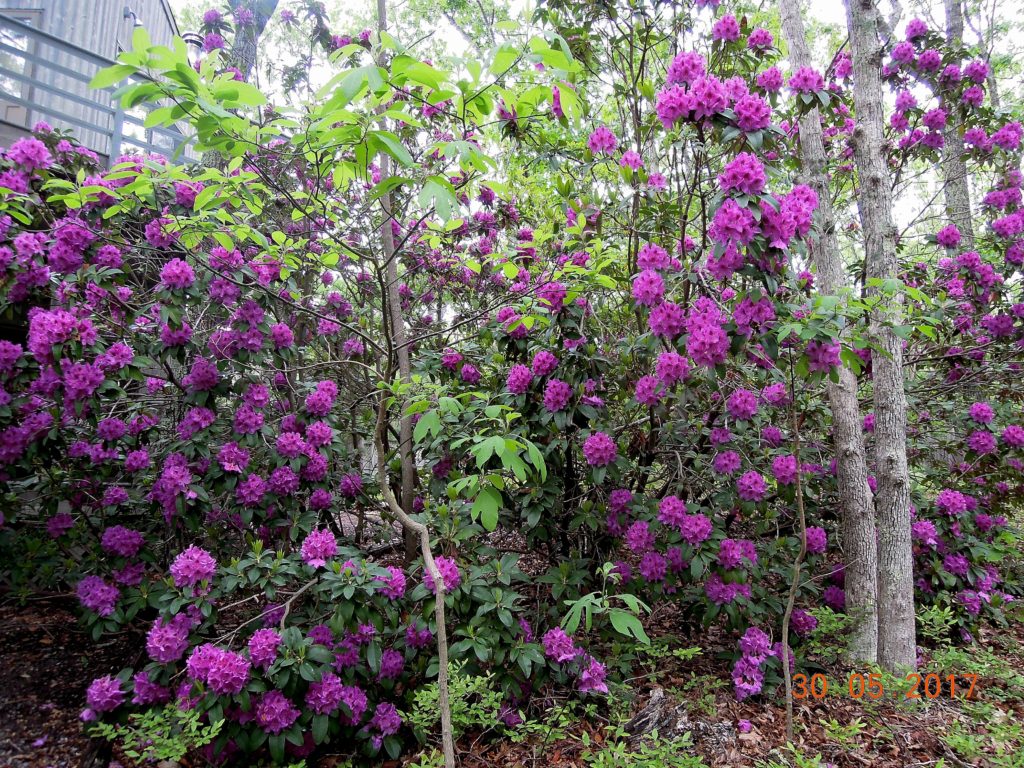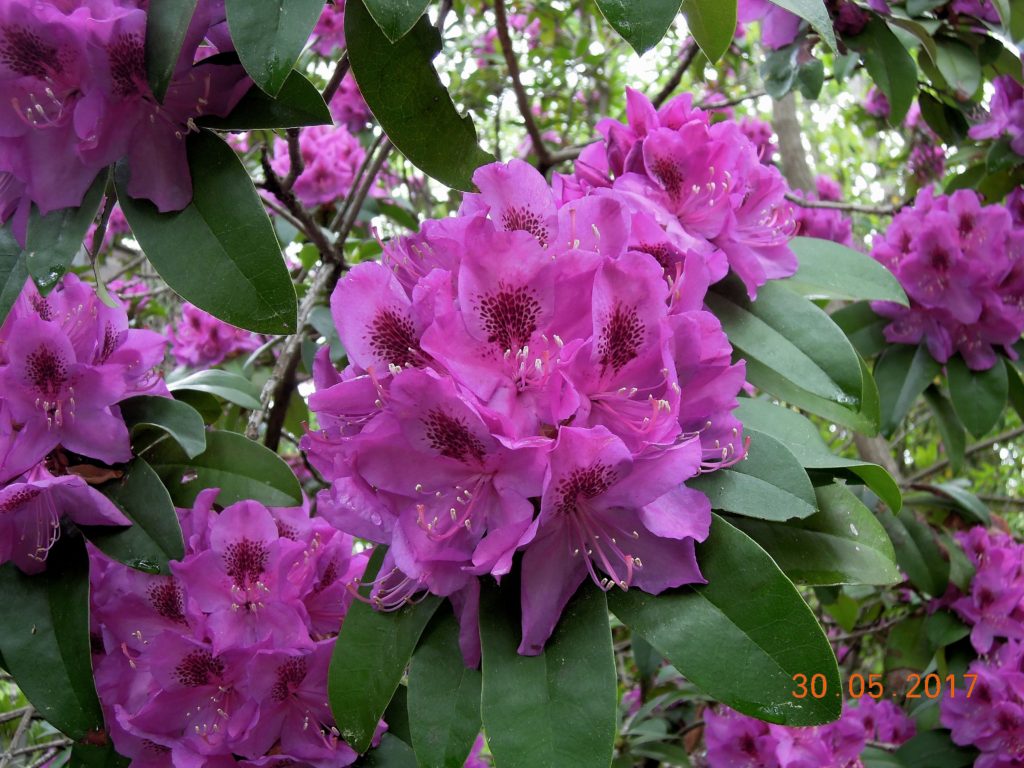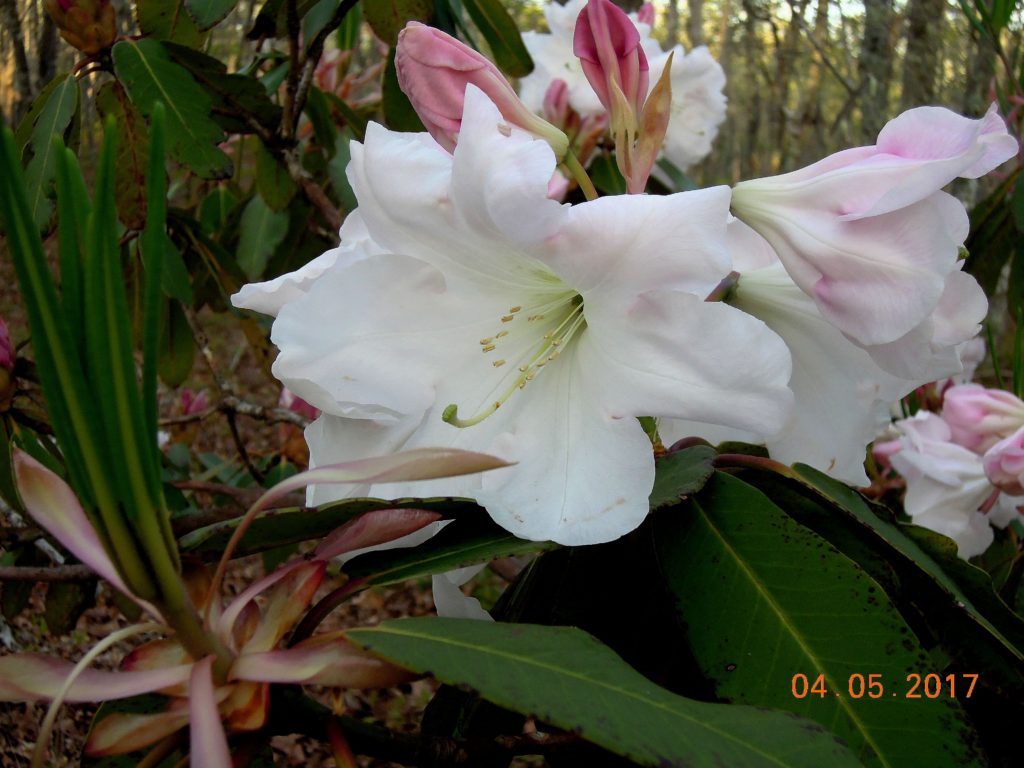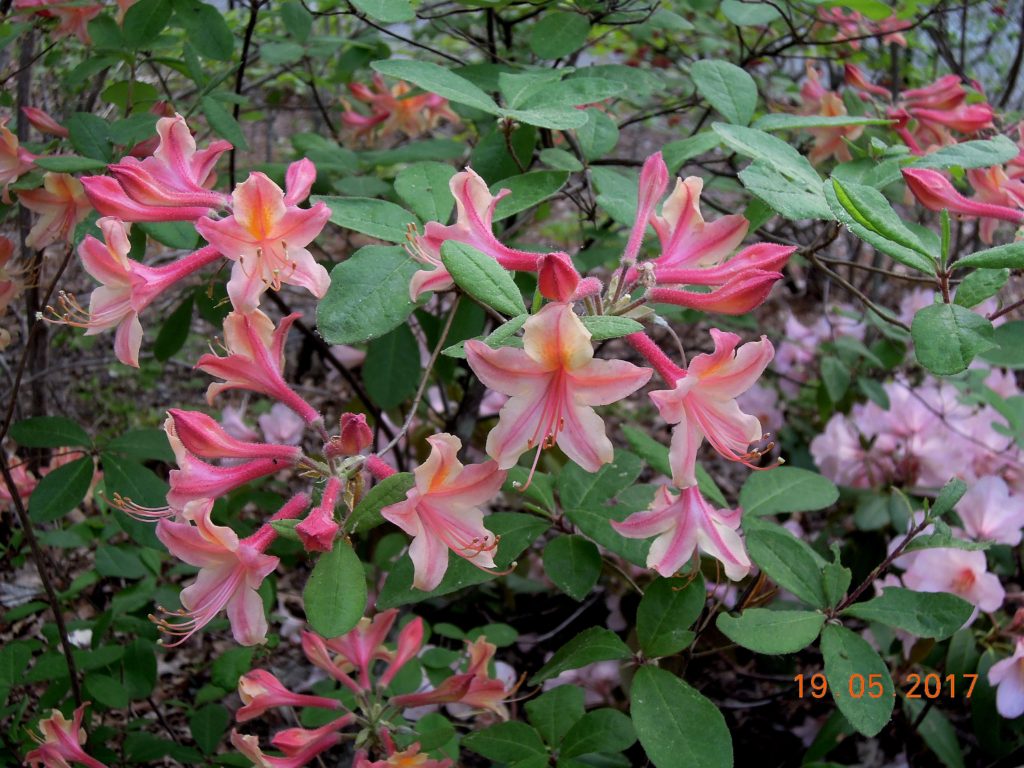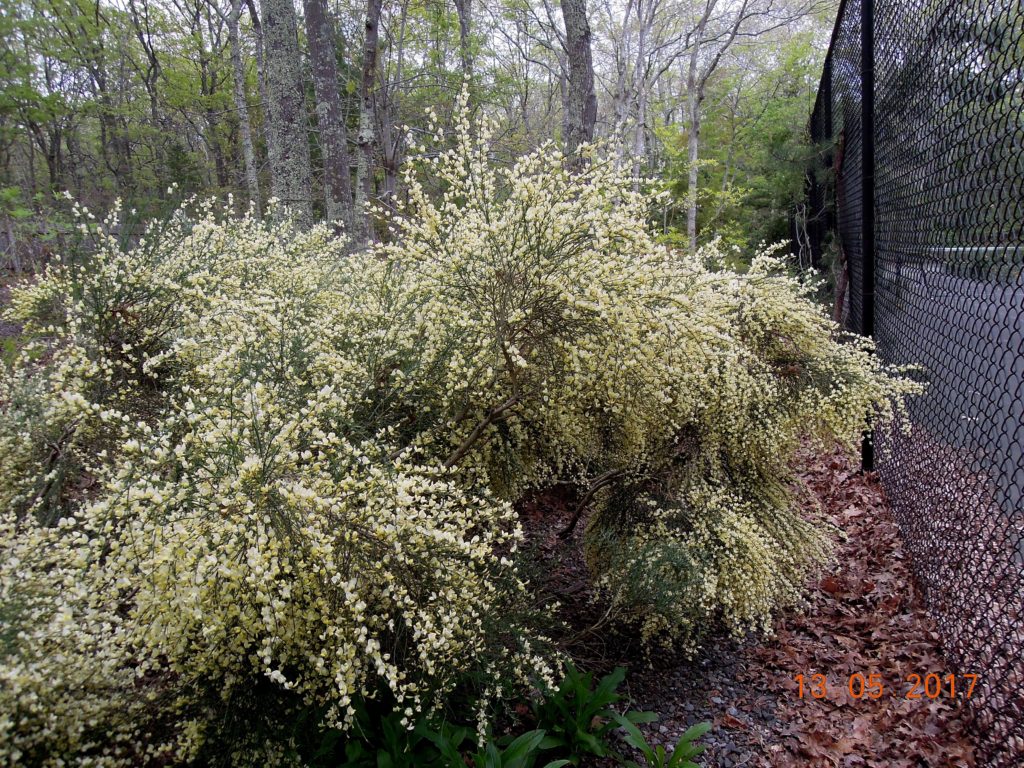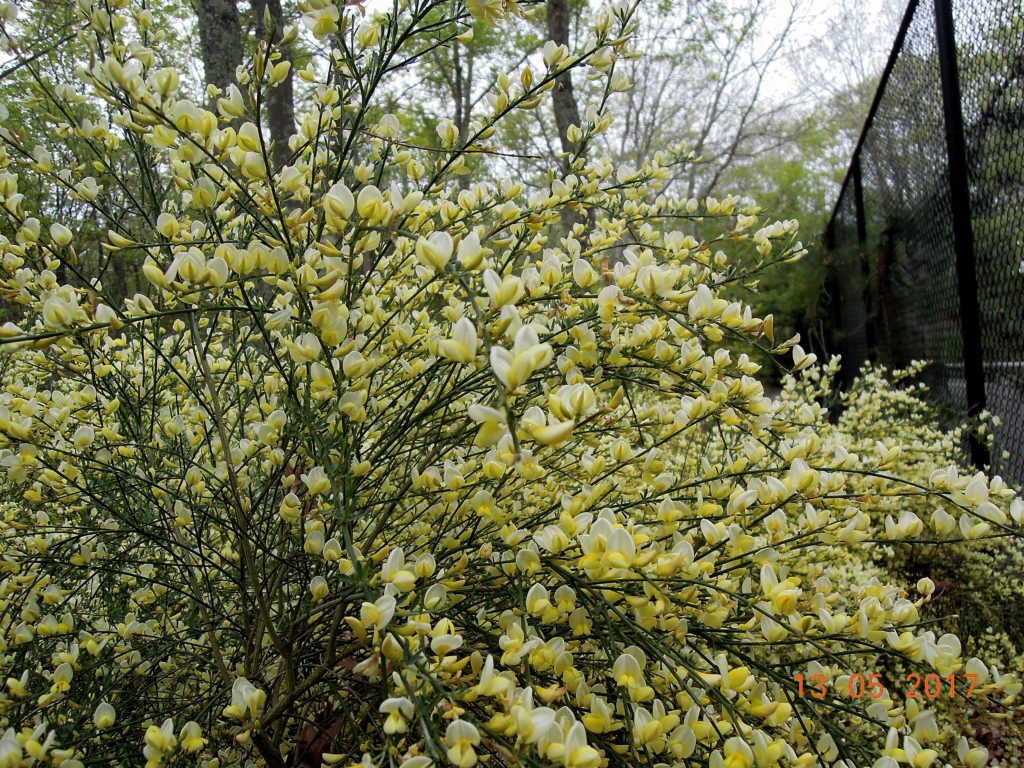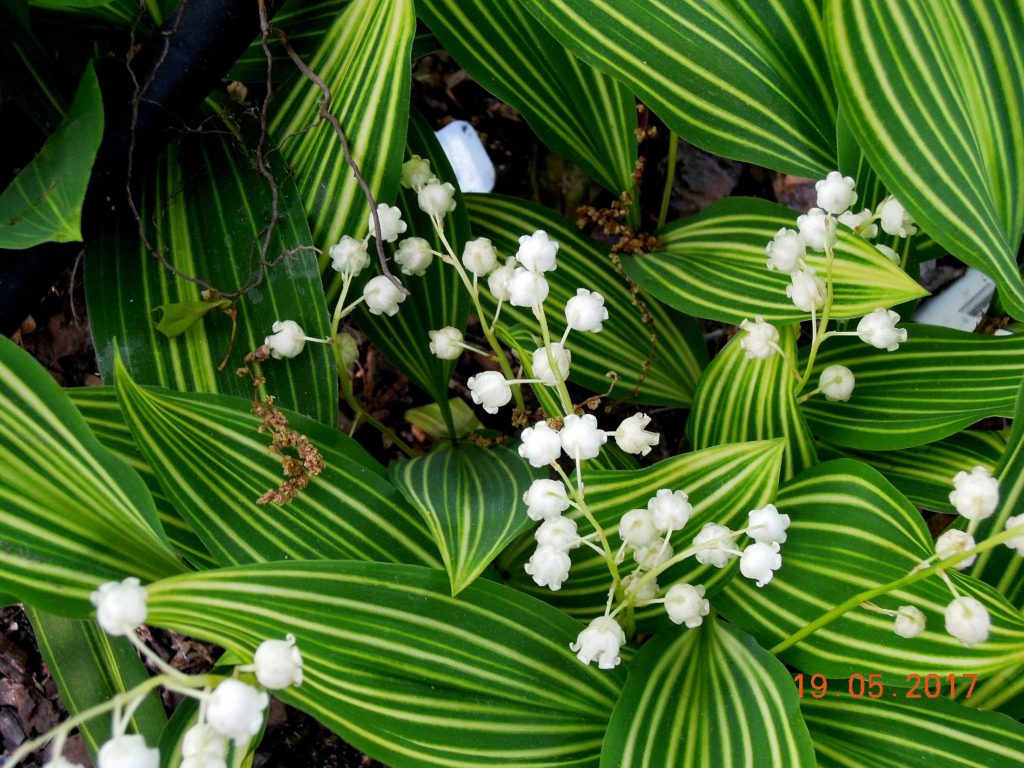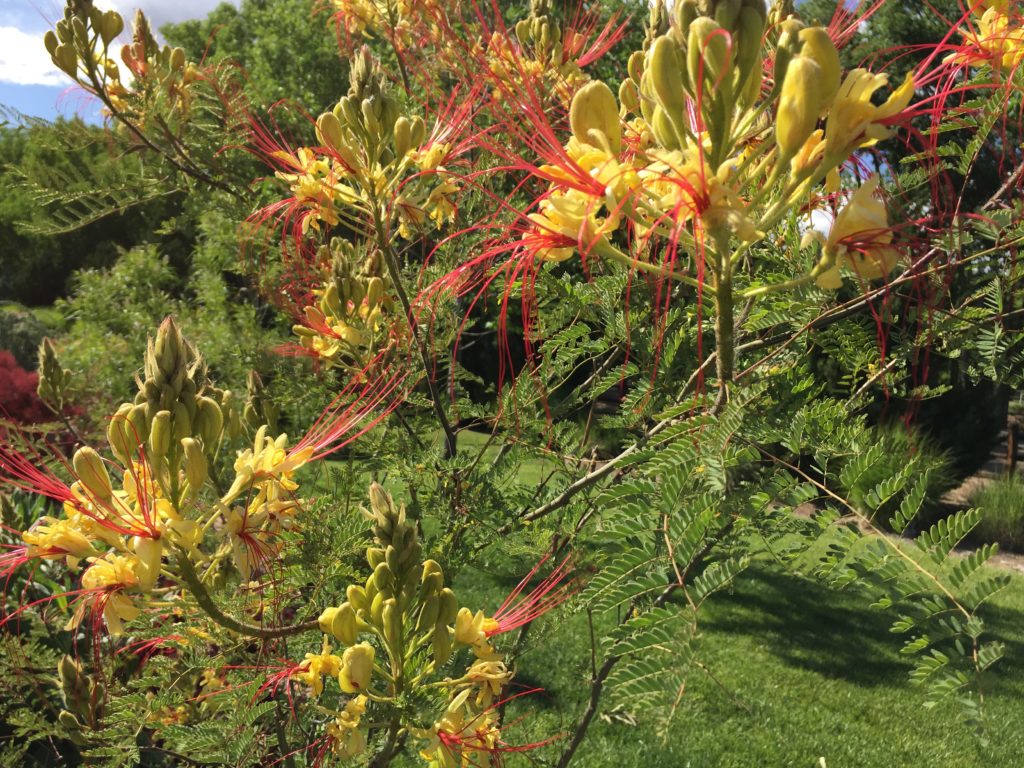We live in an extraordinarily trying time.
Mother Nature has been almost as erratic and misguided as the Ruling Class in D.C.
Yet, this Spring, she seems to have had a brief change of heart: The garden has never looked as splendid, bursting at the seams with awe-inspiring bloom. Especially impressive are the Rhododendrons, like the purple-flowering variety shown below.
A few Rhododendrons possess both spectacular bloom and fragrance. One of the finest is the award-winning R. ‘Loderi King George’ (Zones 7-9). In 1920, this beauty was hybridized by Sir Edmund Loder in England and it has been prized ever since. (One of George’s parents, R. fortunei, is discussed in the previous post.) Large snowy-white blossoms produce fragrance that carries on the air and fills the garden with intoxicating perfume. The shrub’s foliage does suffer winter damage, but the plant quickly produces new pristine green leaves in the Spring. Photo below.
Another intensely fragrant Rhododendron is the native deciduous azalea, R. ‘Choptank Rose Seedling’ (Zones 5-8). This seedling comes from a group of natural hybrid azaleas (atlanticum x periclymenoides) discovered along the Choptank River, on the Maryland/Delaware border. With a seedling, you never know for sure what the flower will look like. I lucked out. Photo below.
Joining Spring’s sweet symphony, the Broom, Cytisus scoparius ‘Moonlight’ (Zones 6-8), produces an abundance of fragrant, creamy-yellow, pea-like flowers. When the flowers fade, purple seed pods add to the dazzle. Moonlight is an easy-care, drought-tolerant shrub that requires sun and well-drained soil. While Broom has a sorry reputation for being short-lived, my plants are over twenty years old and are still going strong. (Just protect against voles!). Photos below.
If you are looking for a fragrant flowering, shade-loving, deer-resistant, perennial ground cover, consider Convallaria majalis’ Albostriata’ (Zones 3-7). About forty-five years ago, while touring the Lake District in England with my husband, a sprig of enchanting lily-of-the-valley (Convallaria) graced our table at dinner. I was smitten and now treasure them in my garden. The variegated form, Albostriata, is relatively new to me and is certainly worth having for the foliage alone. Note: It may occasionally revert to an all green leaf. Photo below.
Finally, an exciting plant from a warmer clime. My friend Dee lives in Albuquerque, New Mexico and sent me a photo of a showy shrub blooming in her garden: Caesalpinia gilliesii (Desert/Yellow Bird Of Paradise). This red-tongued Diva is native to Argentina and Uruguay and thrives in Zones 8-11. It isn’t fragrant but Hummingbirds love it. And so do I! Sometimes the grass is greener.
